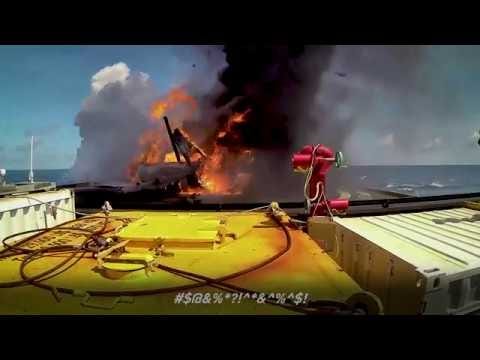Hero Mode - The Next 30 Trips - Issue #5
Hero mode is a useful gear to be able to shift into - it just cannot be the only gear you have.
Everyone Wants to Save the World🦸
At my previous place of work, hero mode was revered. Which, in a way, is great! We had a strong sense of ownership thrust upon given to us. Our titles were "Responsible Engineer" which meant that if something wasn't ready to go, it was our fault even "if a meteor falls from the sky and takes it out," a direct quote from my first day orientation. We did whatever it took to get the job done, even across many iterations:
But there are some problems with "hero mode" being revered in the culture. Simply, it becomes the default mode. The more it is revered and celebrated, the more it becomes the default mode. And that is a problem.
Threatening Your Safety
If "hero mode" is your team's default mode of operation, you may find over time that people start manufacturing crises to stand out. I have seen this happen, innocently, through people being overloaded and unable to get everything done. And, of course, I have seen it happen consciously in order to win point with management.
The former is a bummer, but the latter is patently insane. It starts small, with people playing "schedule chicken" to see how long they can wait before throwing projects into motion. Then it escalates to looking for the most audacious way to solve a problem.
You can always tell these folks in a meeting. When everyone else wants to wait a day and try again with fresh eyes, they want to work all-night with no clear plan. When others want to take a beat to gather more data, they want to keep pulling things apart at random to find the issue. Usually, both of these approaches create more problems than they solve.
However, the worst one is the people who fully manufacture a crisis in order to try and solve it. It's like pointing a gun at the team, then lowering it and saying, "I saved you!" It's dangerous and exhausting.
Chasing Band-Aids 🩹
Another issue with "hero mode" is that, at best, you're going to solve the problem with a giant band-aid. Something that fixes the problem right now. No matter your intentions, I will just let you know that you're not going to come back later.
In the world of software, this is called technical debt. It's the same for hardware and operations except that, in many ways, it's even more painful to overcome. That's because whatever you buy, build, install, write into procedure, train on, then operate is going to become ingrained into the process. Then, if you change it, you're going to have to overcome the inertia and costs of that change.
However, that's a really big *if*. When your team is in "hero mode" at all times, you won't have the time to come back and fix the band-aids. There are too many new quests to go on! "We can't look backwards," you'll say. Or maybe you *do* want to change things but management won't budget for it.
Frankly, it's a trap. A trap that I have seen dozens of companies fall into, but one that must be avoided at all costs. It leads to mistakes, burn out, and failure.
The Best Landing ✈️
So, how do you avoid "hero mode?" Simple: make a solid plan and evolve that plan as needed. But always have a plan. Don't "do it live" as I heard one old client describe their test operations.
My Dad and I used to talk about this through the lens of flying small planes. You want to build a smart flight plan, file it, and stick to it. But, invariably, things will come up. Contingencies should be a part of your good planning. This makes you more resilient and lowers your risk. You should always have an alternate airport in mind. You should always monitor your fuel burn and time in enroute. Having a strong plan gives you the brain space to be present in your operation and gather the real time data that lets you know when you need to make a change.
This same mentality extends, of course, to launch operations and hardware development. But I think it also extends to any team working on the edge of what is possible.
Next time you're in hero mode, ask yourself which is the better landing and who is the bigger hero:
Is it the pilot coming in for a landing at night during a storm, low on fuel with one engine out, fighting a big crosswind?
Or is it the pilot watching that sketchy landing from the pilot's lounge? The person who evaluated the weather as part of their planning, put their ego aside, and never took off in the first place?
Unnecessary risks to hardware, people, and operations isn't heroic. It's just foolish.


